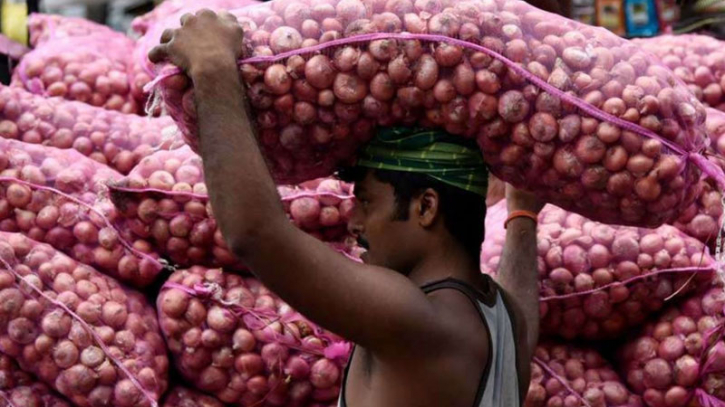India imposes 40% duty on onion exports as prices rise

The Indian government has imposed 40% duty on onion exports till the end of 2023, said the country's finance ministry.
The duty is applicable immediately, it said.
According to NDTV, the move comes as onion prices continue to rise this month.
Reports said onion prices are likely to keep rising in September.
Indian financial and business portal Moneycontrol had earlier reported that onion prices in key markets across the country have risen sharply and even doubled in some places, including at Maharashtra’s Pimpalgaon and Lasalgoan Agriculture Market Committee, Asia’s largest onion market.
Experts had said that prices have surged due to speculative buying following decreased acreage of onions this monsoon as well as depleted carry-forward rabi stocks.
Tomato prices, on an average, also registered a further increase in August so far, although more recent data indicate some pullback in rates, the Reserve Bank of India (RBI) said in its bulletin on Thursday.
Onion and potato prices also registered sequential increase, the bulletin said.
Earlier on August 18, the government had announced that it will release onion from its buffer stock in the targeted regions with immediate effect to ensure prices remain under check till the new crop arrives from October onwards.
The government is exploring multiple options for disposal of onion: e-auction, e-commerce as well as through states at discounted rates via retail outlets of their consumer cooperatives and corporations, it said.
It has currently maintained 3 lakh tonnes of onion under the Price Stabilisation Fund (PSF) to meet any exigencies, if rates go up significantly during the lean supply season.
As per the government data, onion prices have started inching up slightly as all-India retail price of the key kitchen staple was available at Rs 27.90 per kilogramme on August 10, higher by a little over Rs 2 per kg in the year-ago period.
Rabi onion harvested during April-June accounts for 65% of India's onion production and meets consumers' demand till the kharif crop is harvested in October-November.
Meanwhile, India's annual retail inflation rose sharply to a 15-month high of 7.44% in July from 4.87% the previous month, fuelled by a sharp jump in vegetable and cereal prices.
Erratic monsoon behind price hike
Vegetables prices, which have a 6% weighting in the overall consumer price index (CPI), hit a seven-month high in June, rising 12% month-on-month, official data shows.
Prices usually ease from August, when the harvest makes its way to the market, but this year, traders expect costs to remain high until October as supplies stay tight.
"The monsoon is disrupting the vegetable supply chain. This year, we are going to witness higher vegetable prices for a prolonged period," said Anil Patil, a Mumbai-based trader.
Costlier staples such as onions, beans, carrots, ginger, chillies and tomatoes not only feed voter discontent ahead of state elections in the next few months: The higher prices are likely to stoke retail inflation, which is expected to hit a seven-month high in July, diminishing the potential for the Reserve Bank of India (RBI) to lower rates this year.
"Supply-side measures would be best suited to temper the rise in food prices. The RBI is expected to remain on pause till at least December 2023," said Gaura Sen Gupta, India economist at IDFC FIRST Bank.
Tomato prices are particularly hot, surging more than 1,400% at the wholesale market to a record 140 rupees ($1.71) per kg in the past three months, prompting many households and restaurants to cut purchases.
Farmers in the third-biggest tomato-producing region in the southern state of Karnataka say poor rainfall, higher temperatures and a virus outbreak have hit the crop, which was planted on less land than a year ago because of a crash in prices.
"Supplies are just 30% of normal as yields," said farmer Srinath Gowda, who manages 200 acres of farmland.
The monsoon has also affected other crops. Key vegetable-producing northern and western states received as much as 90% above-average rainfall, and some eastern and southern states got up to 47% less rain, according to the weather department.
Some states received no rain for weeks, and then were flooded with a month's worth of rain in a week, an official with the meteorological department said.
The supply disruptions, and the resulting higher food prices, are expected to send retail inflation higher to 6.5% in July, its highest level this year and above the Reserve Bank of India's 2% to 6% target range, HSBC economists said in a recent note. Economists now expect the RBI to keep interest rates high into mid-2024.
.png)




